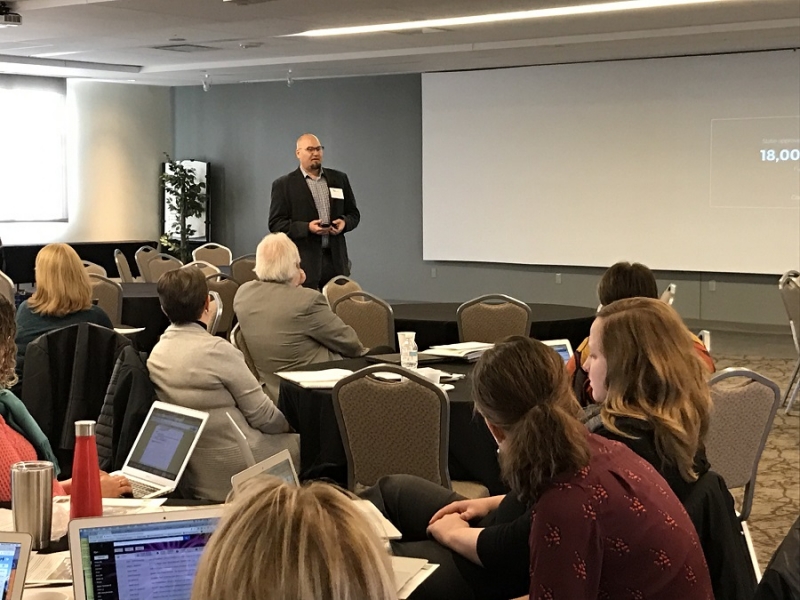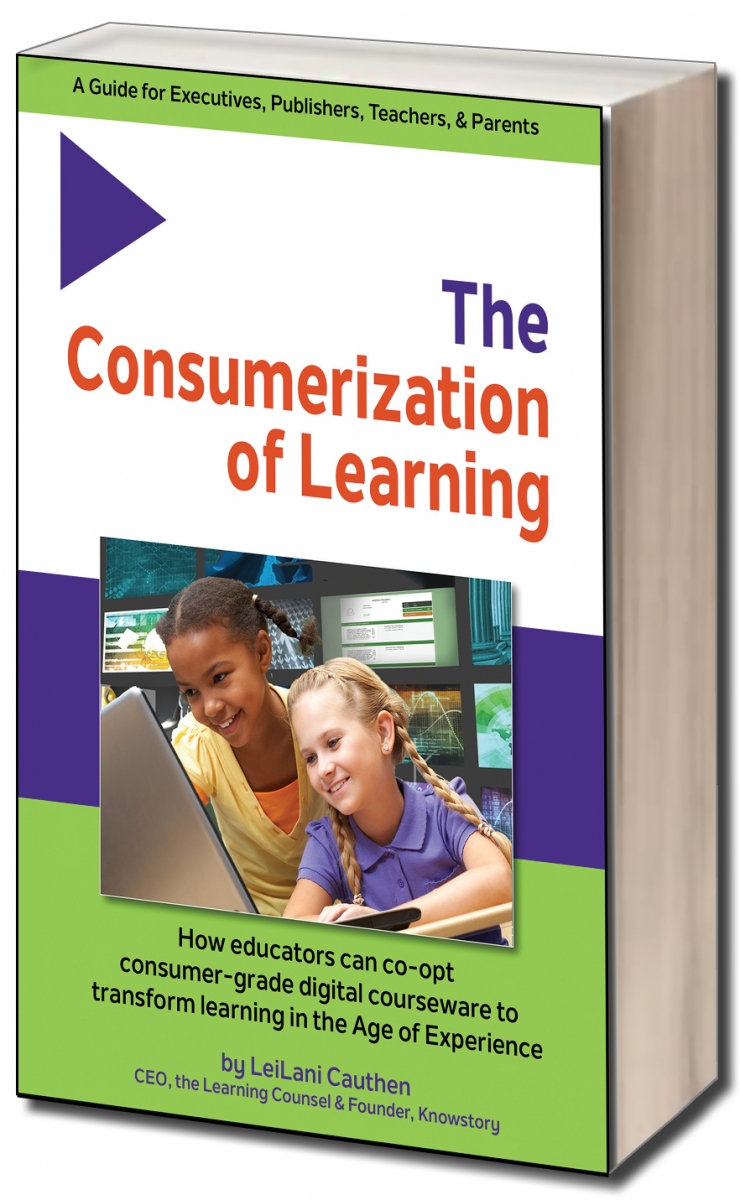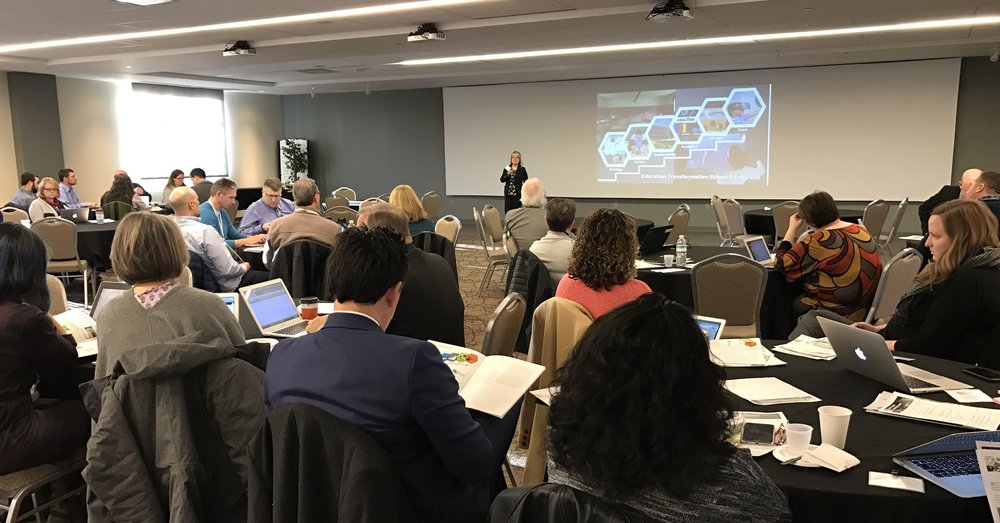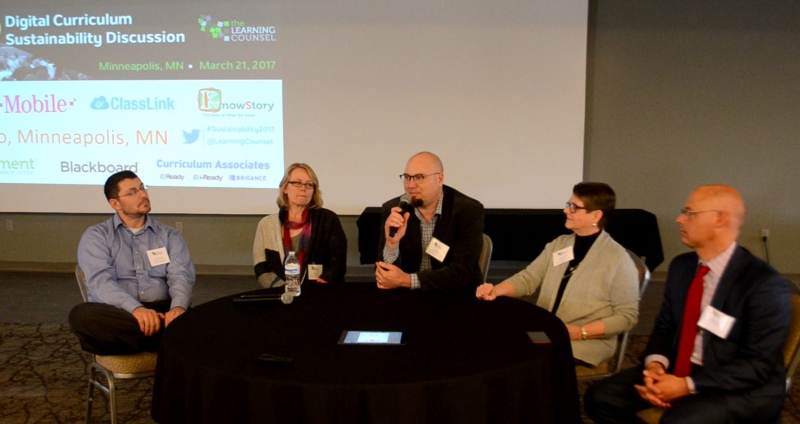It was a packed room in late March when educators from across the state known for its 10,000 lakes, met downtown on the Saint Paul side of the river. The subject was the transformation of teaching and learning, the effects it’s having on instructors in the classroom and how we can support them in the shift to digital curriculum.
The host, Dr. David Kafitz of the Learning Counsel, welcomed all in attendance. “Today you will leave with context and practical steps you can take when you get back to your schools and districts,” he stated. “We’ve been to 10 other cities so far, just this year, and met with hundreds of school leaders to talk about their changes, their challenges and their successes, as well as failures. Today we’ll share this knowledge as well as hear your stories. Then we’ll provide executive exercises and a panel discussion. All of this, to hopefully provide you with tools and knowledge to make sure you’re not left in chaos, by all that is changing today.”
The Keynote address was delivered by LeiLani Cauthen, CEO and Publisher of the Learning Counsel. She gave a national view on the disruption at hand across the whole of the education space and the path to digital transition sustainability. “The education transformation continuum is six specific stages, right now we are leaving tactics and entering sustainability,” she stated. “This is what we’re going to cover today, but we’ll also take a look at each stage into the future to provide context for your future planning and prediction as leaders.” She continued, “Education will move through to a refinement of teaching and learning that will arrive at the same place as other industries who have moved through the technology revolution – the Age of Experience.” She showed slides of what this looks like and how each stage of shift will take place and effect schools.
Photo Gallery: Minnesota Discussion
As the day progressed, education speakers from the area addressed the audience with what they are doing to deal with change and support classroom instruction.
Jeff Plaman from the Minnesota Department of Education spoke about technology’s usefulness but also its relationship to the complete teaching and learning paradigm. “Tech gives outputs  based on inputs. Those inputs can always only be from the past, from a time that already happened,” stated Jeff. “Learning is not that way. From our students, we see so many variables from so many students, we find it hard to reduce it down to something we can predict. We wonder how we haven’t figured it out by now. Learning is a complex interaction of variables. Tech is a great tool, but alone is never going to solve everything. Teachers need to believe in achieving results based on the actions they take, over time.”
based on inputs. Those inputs can always only be from the past, from a time that already happened,” stated Jeff. “Learning is not that way. From our students, we see so many variables from so many students, we find it hard to reduce it down to something we can predict. We wonder how we haven’t figured it out by now. Learning is a complex interaction of variables. Tech is a great tool, but alone is never going to solve everything. Teachers need to believe in achieving results based on the actions they take, over time.”
He explained further how learning should focus on the stuff machines can’t do. “It’s important to focus on the human elements. Look at what machines can’t do,” he stated. “They can’t choose objectives and hold values, they can’t do action based only on past experience, can’t do causation, can’t imagine and invent the future.”
The Four “Be’s”
The group discussed how teachers must be empowered and supported with PD that gives them ownership of their tools and the curriculum. They need to be able to use tech to create intersection points and assist them to build as they go. “Software in some senses has become so good that it hasn’t left a lot of room for teachers,” came a voice from the audience. “They don’t know what to do with themselves.”
Jeff from the Minnesota DOE jumped in again, “I think a key lesson here is to prioritize relationship—know what the individual child does. Show genuine care through intellectual safety and encouragement, time, empathy, and warmth. Press for consistently high expectations.” It seemed the room agreed that even with all the technical capabilities today, we can never veer away from that core value of why people became teachers in the first place. Jeff seemed to wrap it up for everyone, with, “I think some teachers have become jaded because of all the other stuff they are burdened with in schools to do. Beyond anything, teachers need to Be there. Be kind. Be yourself. Believe. The 4 Be’s.”
Educator Panel Discussion
After several presentations and an executive exercise to develop strategic thinking and effective use of resources across a district, came the leadership panel.
Speakers included: Ray Sperl, Technology Coordinator of Cambridge-Isanti Schools; Barb Meidinger, Principal, North Dakota Center for Distance Education; Jeffrey Plaman, Online & Digital Learning Specialist from the Minnesota DOE; and, Rachel Gorton, Instructional Technology Coordinator from Burnsville-Eagan-Savage Public Schools.
“If you’re going to blend, you need to think about how the student is getting it and the second thing is if you’re going to flip, you have to pay less attention to the digital and more attention to the face-to-face interaction,” stated Jeff. “Teachers are helping students understand where their mistakes are, to coach them and intersect to help. Considering the idea of changing from traditional to digital, one of the best things you can do is start using the LMS in the classroom, doing it in the class. Go to teaching in a hybrid.
“The intersection points between technology and face-to-face aren’t always going to be the same points for every student,” stated Barb Meidinger. “Sometimes you have to build in the formative assessments so that you can have a pulse on what students are doing at any time. Teaches can pop in on the student at any time during school hours and can see what’s happening, or make an appointment to see how a student is doing and help them get through things.”
“I agree,” stated Jeff, “You have to create community and safe space for any student.” Barb added, “Yes, and once a student takes the first step to online interaction, they come more often and talk a lot more. At the Center for Distance Education we work with over 175 schools all across ND and our teachers have to work with very remote students. We focus our online teacher’s attention on creating that relationship with students so they will connect in an online environment.”
Kristin Daniels, the Innovation Coordinator from Cambridge-Isanti Schools added from the audience how they are implementing blended learning. “We did a Blended Learning 101 for teacher PD as an online course with the support of the whole teaching and learning department. It is a self-paced course with some face to face time. It was broken into several components, ‘welcome’ and ‘intro session’, then ‘what is the cloud,’ lesson 2 into ‘chrome browser,’ ‘google apps,’ and lesson 3 on ‘organizing, creating and sharing digital content,’ and then lesson 4 was ‘how to build an engaging lesson.’ We gave over 556 total hours of delivery across the courses.”
Ray Sperl, Technology Coordinator of Cambridge-Isanti Schools, added: “Teachers were experiencing blended learning on their own with this. Most of our teachers are using Google Docs to be really honest right now, and other than one teacher who has been a pocket of excellence using Moodle, so far we haven’t committed to an LMS yet, but we did see this one teacher get a lot of traction through activities and keeping kids moving forward. One teacher who has been using the CK-12 health curriculum was really an excellent sample of success.”
The day ended with all getting a good look at what’s happening locally, what’s working and the national view of education’s shift to digital. And most importantly, new perspective and knowledge to take back to their schools and teams.
A Reference for Every Educator












